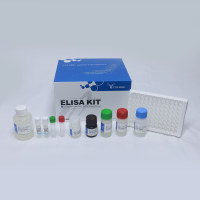Evaluation of Alterations in the Tumor Suppressor Genes INK4A and INK4B in Human Bladder Tumors
互联网

互联网

相关产品推荐

CDKN2A/p16INK4a重组蛋白|p16INK4A Protein
¥2580

促销中大鼠肿瘤坏死因子α(TNF-α)/Rat TNF-α/tumor necrosis factor (TNF superfamily,member 2)/Tnf;Tnfa;Tnfsf2;Tumor necrosis factor;Cachectin;TNF-alpha;Tumor necrosis factor ligand superfamily member 2;TNF-a) [Cleaved into: Tumor necrosis factor;membrane for/TNF/ELISA试剂盒
¥3420¥3800

Recombinant-Arabidopsis-thaliana-Protein-CPR-5CPR5Protein CPR-5 Alternative name(s): Protein constitutive expression of pathogenesis-related genes 5; Protein constitutive expression of PR genes 5 Protein hypersenescence-1
¥13790

PRAME/PRAME蛋白Recombinant Human Melanoma antigen preferentially expressed in tumors (PRAME)重组蛋白Opa-interacting protein 4 ;OIP-4Preferentially expressed antigen of melanoma蛋白
¥1500

IL-2重组蛋白|Recombinant Human IL2 Protein
¥1080
相关问答

